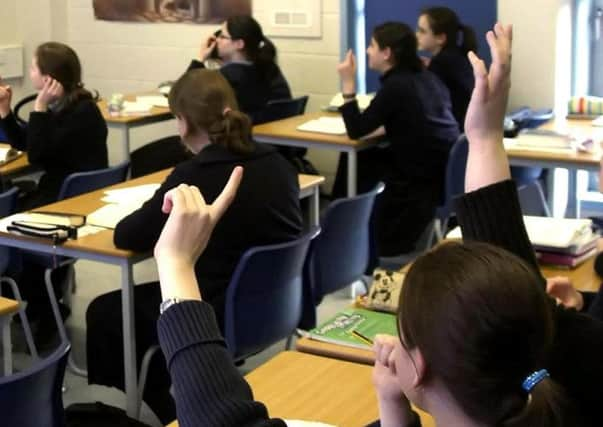Majority of Sheffield children get preferred secondary school place


Of the 5,354 pupils set to start secondary school in September, 96 per cent have been given a place at one of their three choices of school, 88 per cent have been given their first choice of school.
This is around the same as last year, where Sheffield was once again above the national average.
Advertisement
Hide AdAdvertisement
Hide AdThis year again saw an increase in the number of children coming through into our secondary schools as the rise in births since 2002 filters through from primary schools.
This has meant growing pressure on places in some parts of the city and that is set to grow again in the next two years.
In order to ensure families continue to access a local school from September 2018, two new schools are being created in those areas of pressure – one on the Bannerdale site in south west Sheffield, and one on the Woodside site in the north east of the city.
Additional places will also be available at Don Valley Academy from September 2018.
Advertisement
Hide AdAdvertisement
Hide AdCoun Jackie Drayton, Sheffield Council’s cabinet member for children, young people and families, said: “I hope today’s results are a big relief to the thousands of families across Sheffield who have been waiting to find out if their child has been accepted into their school of choice.
“We are providing more local school places to help us meet the needs of our growing population. We all want the best for our children and a huge priority for us is to keep on raising attainment and achievement rates across the city. Getting into one of the schools of choice and having outstanding local schools are key to this.”
Last year, 96 per cent were also allocated one of their three choices, while 87 per cent got a place at their first choice of school.
The small number of children who were not allocated a place at any of their three preferences have either been referred back to their catchment school or been allocated the nearest school with places available.
Advertisement
Hide AdAdvertisement
Hide AdIn Rotherham, out of 3,408 applications for places, 98.5 per cent have been given one of their three preferred choices, with 94 per cent getting their first preference. This is despite an increase in the number of applicants for places this year.
Coun Gordon Watson, Rotherham Council's cabinet member for children and young people’s services said: “This is once again great news for pupils here in Rotherham.
"Being able to offer the vast majority of pupils their preferred choice of secondary school is not only good for families and communities but it will also help drive up attainment levels.”
Last year 96 per cent of pupils were allocated one of their preferred schools, and in 2015, 94 per cent were given the school they wanted.
Advertisement
Hide AdAdvertisement
Hide AdOnly 1.5 per cent did not get into a preferred school and instead have been allocated either their catchment area school or nearest school to home with a place available.
Rotherham officials have planned to cope with the increased demand of places with a raft of measures.
Already councillors have agreed an additional 150 new places at Wales High School as part of wider £7m growth plans across the borough.
And cabinet is recommended to support similar plans for Wath Comprehensive School at a meeting later this month.
Advertisement
Hide AdAdvertisement
Hide AdFurther plans include expansions at St Bernard’s, St Pius, Oakwood High and Aston.
Ian Thomas, strategic director of children and young people’s services at Rotherham Council added: “The overwhelming majority of children receive an offer of their preferred choice of school here in Rotherham, which I am sure will be welcomed by families across the borough.
"This is a direct result of the council’s ongoing positive working relationships with the borough’s secondary schools and academies and careful planning by the Council to ensure we have enough local places for pupils.”
Advertisement
Hide AdAdvertisement
Hide Ad